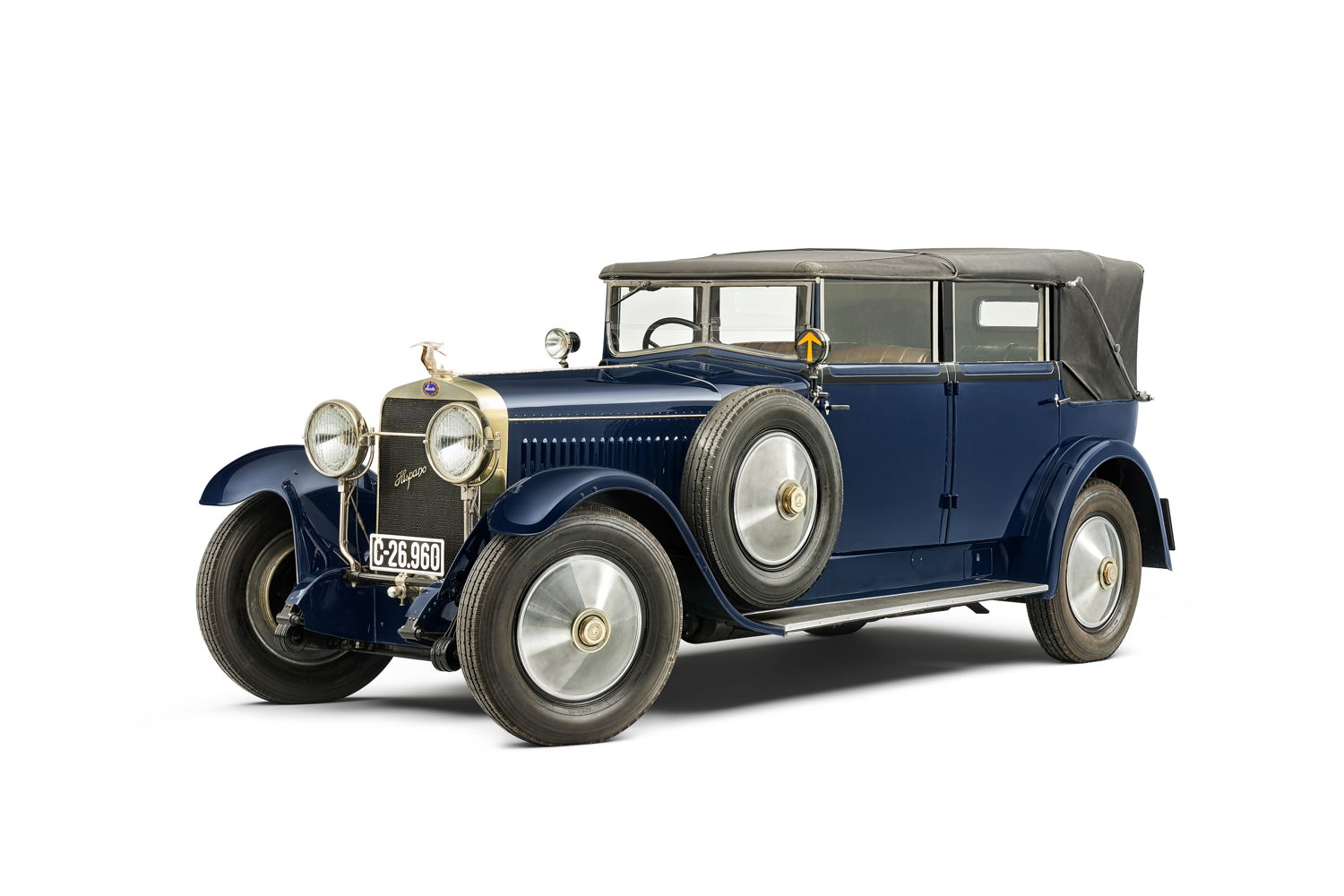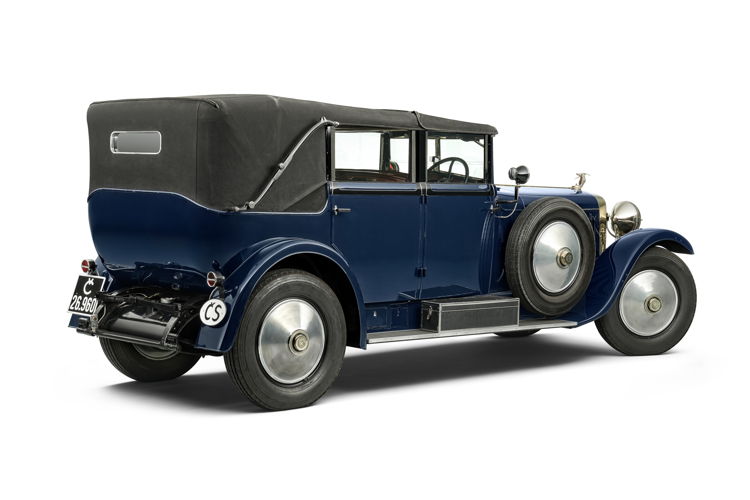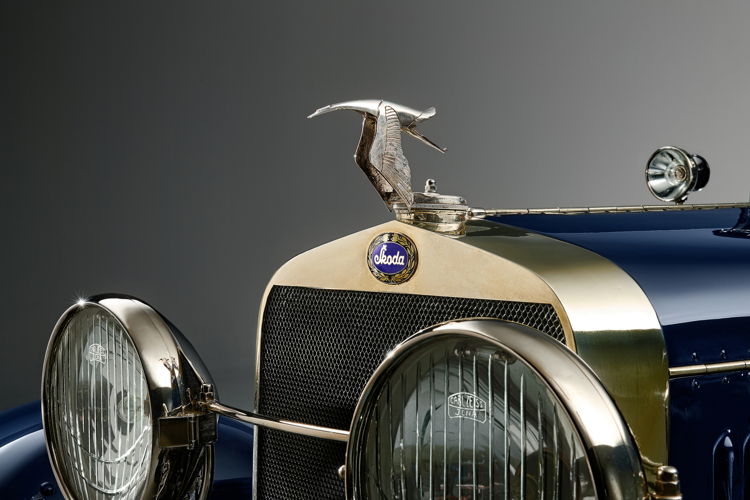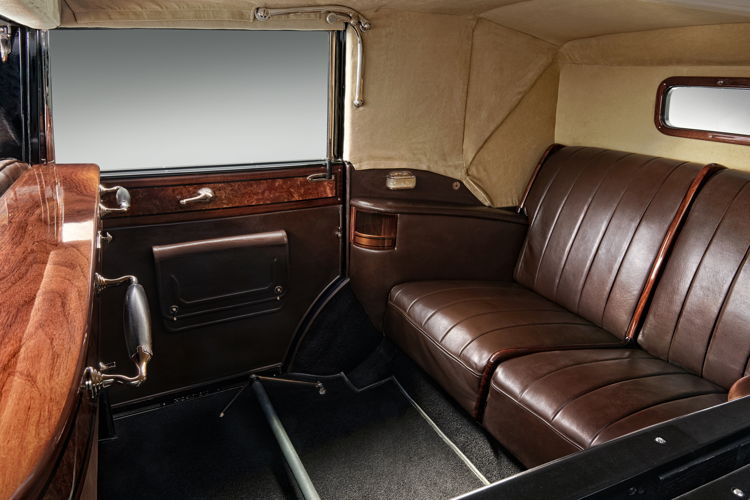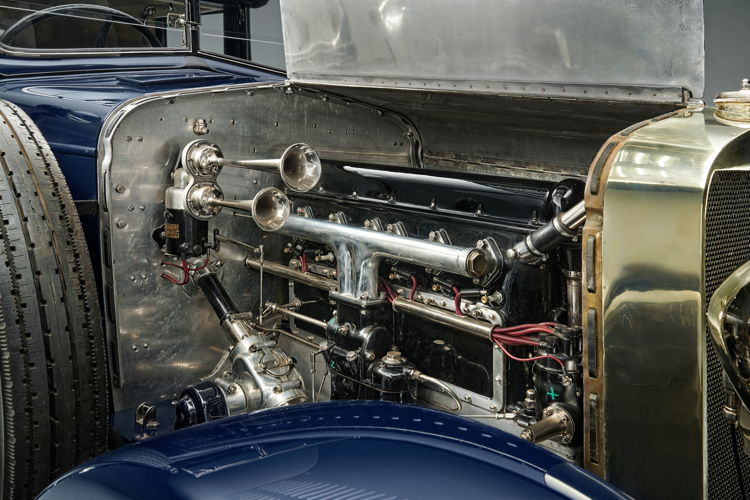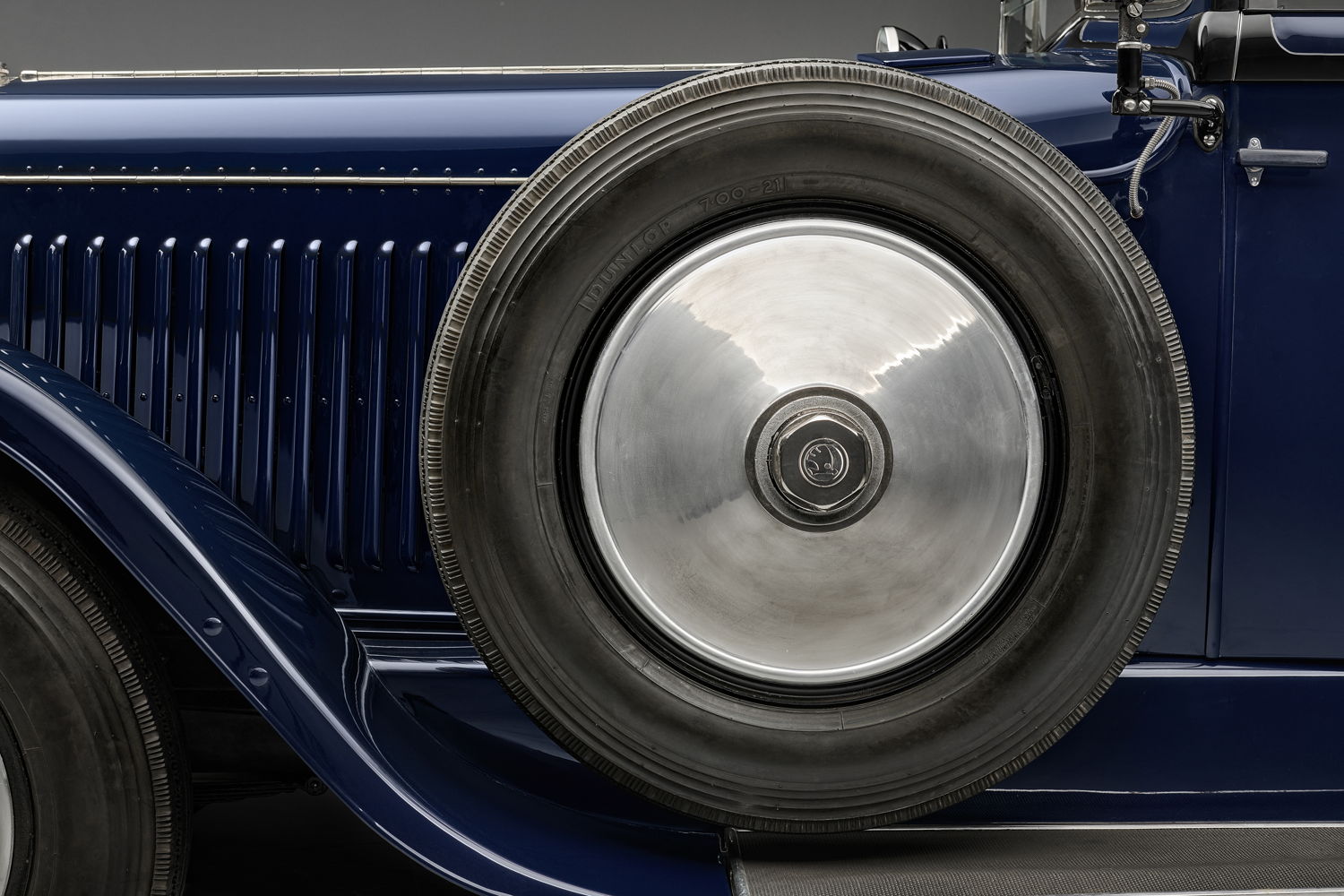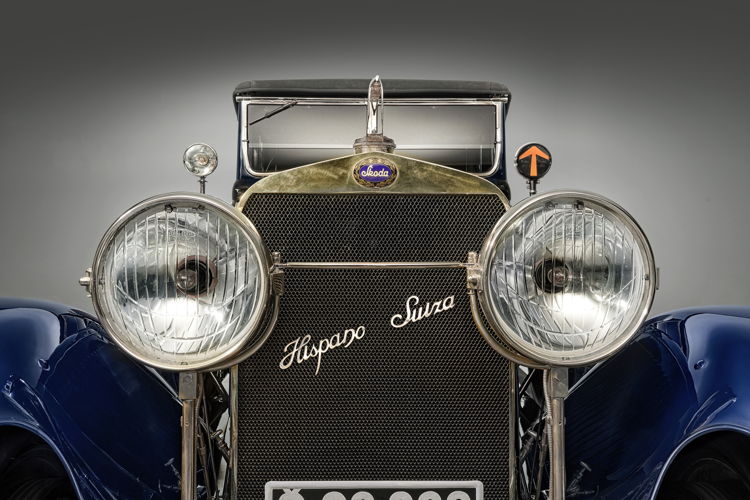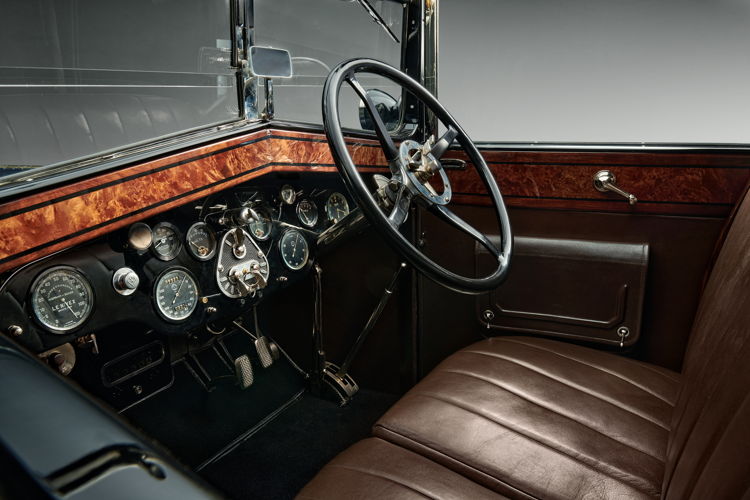Škoda Hispano-Suiza: The rebirth of a First Republic gem
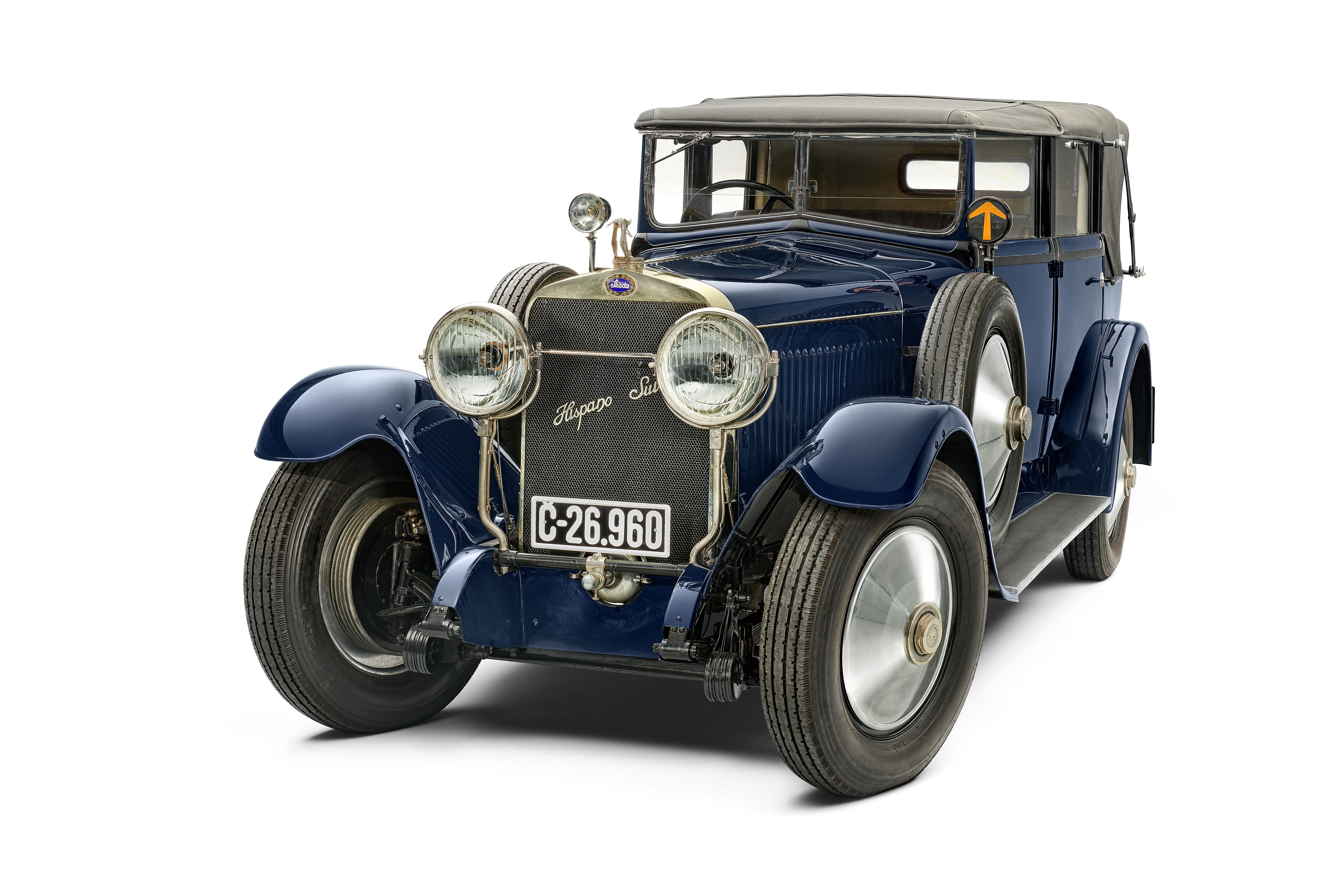
› Škoda Hispano-Suiza series built from 1926-1930 was one of the most advanced cars of the Czechoslovak First Republic
› Licensed production started on November 10, 1924, the first manufactured piece was delivered to President T. G. Masaryk on May 10, 1926
› Mobile chassis from Pilsen were complemented by individually designed bodies produced in Mladá Boleslav
› Škoda Museum presents newly restored Škoda Hispano-Suiza from 1928 at Techno Classica in Essen from 12 to 16 April 2023
Mladá Boleslav/Kortenberg, 12 April 2023 – The Škoda Hispano-Suiza 25/100 KS limited series was worldwide one of the most advanced cars of its time. The prestige of the licensed vehicle was enhanced by Škoda’s uncompromising emphasis on the quality of materials and workmanship. The 6.6-litre six-cylinder engine with 100 hp (74 kW) at 1,600 rpm accelerated the two-tonne, five-meter-long car to more than 120 km/h. The professionally restored exhibit of the Škoda Museum from 1928 will be presented at the Techno Classica Essen from 12 – 16 April for the first time.
With the in-line eight-cylinder Laurin & Klement FF the Mladá Boleslav-based car company entered the automotive top category as early as 1907. From 1924 onwards, the flagship model was the L&K 450, a five-liter six-cylinder with silent valve timing. When a devastating fire hit the carmaker shortly afterwards, negotiations to bring in a strong strategic partner were precipitated in 1924 – a role that the Škoda engineering and armaments concern based in Pilsen then assumed in 1925. The company’s local automotive department had produced mainly military specials from 1919 onwards, before licensed commercial vehicles were added in 1924: the electro-petrol Tilling-Stevens and Sentinel steam locomotives.
Already on November 10, 1924, Karel Loevenstein, by that time General Manager of Škoda Pilsen, decided to start the licensed production of the Hispano-Suiza H6B luxury passenger car. Škoda Pilsen already produced aircraft engines of this company, which had its production plants in France and Spain (hence Hispano) and was headed by a Swiss (Suiza) chief designer. The car featured a rigid ribbed chassis frame with a generous wheelbase of 3690 mm. Of particular note was the OHC petrol engine with six cast iron cylinder liners in an aluminum block. Regardless of cost, the crankshaft, housed in seven bearings, was machined from a 350kg forging to the resulting 45kg.
The carefully balanced engine delivered 100 hp (74 kW) at 1,600 rpm and 135 hp (99 kW) at 3,000 rpm for a short time. Approximately two tons, over two meters high and more than five meters long, the colossus reached speeds of over 120 km/h. The average consumption of 20-25 liters per 100 km was quite adequate at that time and the mechanical brakes were extremely reliable. Furthermore, the progressive booster used the kinetic energy of the vehicle. In mid-September 1926, the management of Hispano-Suiza undertook a comparison of their version with the licensed Škoda car and found the Czech production to be superior in many respects, including more accurate shifting and steering.
The Pilsen factory did not have its own body shop, so the complete chassis of more than half of the total of 100 units were assembled by the plant in Mladá Boleslav. The remaining units were manufactured at independent companies such as Aero, Brožík, J. O. Jech, Petera (current Škoda Auto plant in Vrchlabí), Pokorný & Beiwl or Uhlík. One third of the cars produced were exported to Turkey and Argentina in addition to European countries. The delivery certificate for the first of these vehicles bears the date 10 May 1926, and the special limousine served President Tomáš Garrigue Masaryk for almost ten years.
Only a handful of Škoda Hispano-Suiza cars have survived to this day. Among the most attractive is the exhibit of the Škoda Museum. The chassis is bearing the serial number 469 and the vehicle is fitted with engine No. 1181. It was completed in Pilsen on May 4, 1928. The renowned Prague coachbuilder J. O. Jech, operating in Prague, near the National Theatre in Karolína Světlá Street, handed over the complete car to the thriving Association of Czechoslovak Sugar Refineries on September 22, 1928. Its president, Robert Mandelík (1875-1946), an industrialist, financier and mayor of Ratboř near Kolín, used the Škoda Hispano-Suiza until the mid-1930s. As was customary at the time, older robust chassis with powerful engines enabling high speeds were adapted to firefighting vehicles, in this case during the Second World War for the Corps in Katowice near Strakonice. In the 1970s the car was bought by a Slovak collector. The next owner, this time from Prague, started a demanding ten-year renovation in 1995. The famous artist Václav Zapadlík designed a creation in the style of J. O. Jech on the original chassis with the original front part of the body. Subsequently, the car changed the owner twice more, and has been part of the Škoda Museum’s collections since 2010.
In August 2019, a demanding restoration project began. Based on a thorough search of archival materials the aim was to consistently restore the car to its original form. Major defects were discovered on the engine and other components and faulty repairs carried out in the past were corrected. The icing on the cake are the faithful replicas of the First Republic registration plates Č-26.960. The professionally restored Škoda Hispano-Suiza will be presented to the public at the Techno Classica trade fair in Essen on April 12-16, 2023.

